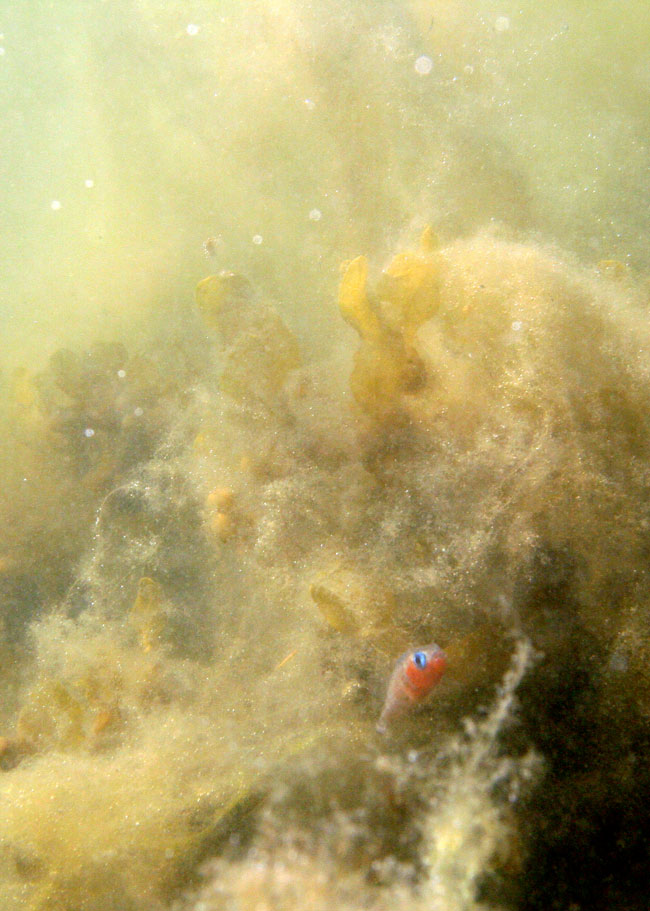Pollution Clouds Mating Game for Fish

Pollution is clouding the view of female fish hunting for the brightly colored sexual displays of their mates.
And the scum-blinded females who fall for dull males could be making fatal decisions by choosing careless and cannibalistic fathers for their offspring, new research shows.
During the breeding season, fit stickleback males stand out in the crowd with their red throats and bright blues eyes. But through the thick algal blooms in the Baltic Sea, the healthy fish look no different than the their dull-colored, poor condition counterparts, according to recent research published in the August 2007 issue of the journal the American Naturalist.
"We found that male sticklebacks in poor condition were able to 'cheat' with respect to communicating their quality to females in turbid water," said study co-author Bob Wong, a behavior ecologist at Monash University in Australia.
In the Baltic Sea, an increase in nutrients spilled from likely culprits such as cars, sewage and fertilizer has lead to algal blooms and spikes in the number of tiny plants called phytoplankton. A 2005 study by the Finnish Institute of Marine Research found that this growth has turned the waters murky--a process known as eutrophication.
The decreased visibility diminishes a healthy male's ability to recognize and fend off the less fit competition. In addition, the unclear waters weaken a female's ability to decipher between her bright and dull suitors, and potential attentive and negligent fathers for her offspring.
Superior stickleback fathers baby-sit their broods, fanning the eggs with oxygen and guarding them against potential predators. Females who choose unhealthy males risk losing their eggs to dead-beat dads and worse.
Get the world’s most fascinating discoveries delivered straight to your inbox.
"This is potentially bad news for females because previous research shows that poor condition males are more likely to eat the females' eggs," Wong told LiveScience.
- Image Gallery: Freaky Fish
- 10 Amazing Things You Didn't Know About Animals
- Female Fickle Fish Force Males to be Flashy


